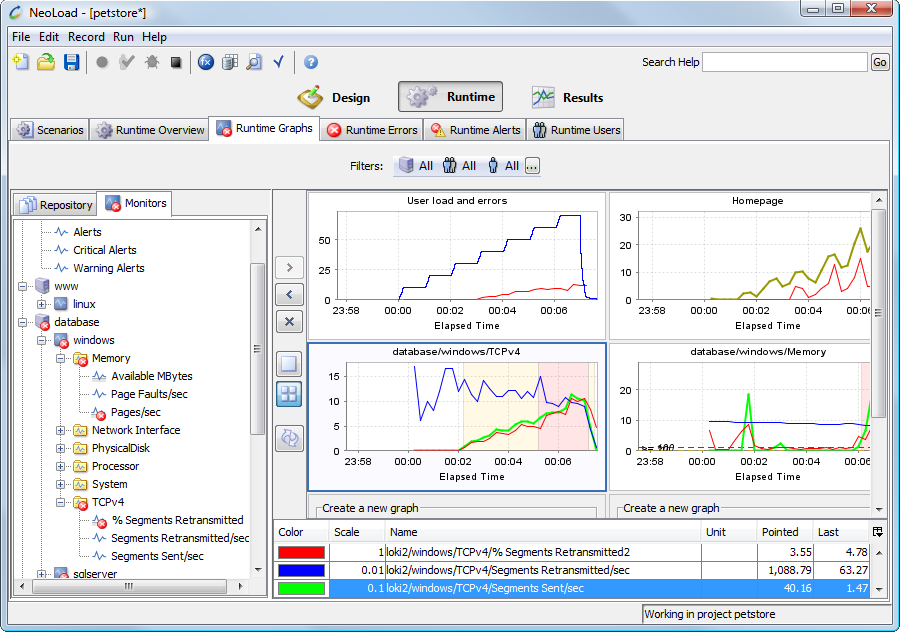
pem (1) 415 unsupported media type (1) ALM (1) Capture response time (1) Gatling load testing (1) Google Web Toolkit) (1) IDX files in LR scripts (1) LR analysis (1) LR concepts (1) LR monitoring (1) LR vuser memory (1) LRE 2020 (1) LRE issues (1) LTE2020 challenges (1) Load runner coounters (1) Neoload converter (1) PSr tool (1) PT network (1) Perfmon (1) Performance Center (1) SSL (1) SSl error in load runner (1) UTCdate neoload (1) What is Processor Queue Length (1) auto deployment (1) azure devops (1) azure devops with load runner (1) build and deployment (1) chatgpt (1) chatgpt in performance testing (1) chatgpt load test (1) chatgpt test data generation (1) cicd process (1) cicd process implementation (1) citrix ica protocol (1) cookie manager neoload (1) correlation cookies (1) csrf token correlation (1) database performance (1) date neoload javascript (1) db performance (1) db tuning (1) defect tracking tool (1) desktop applications load testing (1) dev web protocol (1) devops integration with Load runner (1) dynamic boundaries (1) dynamic correlation (1) epoch time stamp java script (1) epoch timestamp neoload scripting (1) excel macro load runner (1) excel reports mdb file (1) extended log (1) fiddler load runner (1) fiddler to load runner (1) fiddler to vugen (1) fiddler vugen (1) fopen (1) fwrite (1) gRPC loadrunner (1) gRPC performance testing (1) gRPC vs.
#Neoload interview questions generator
Performance Testing (152) LoadRunner (120) Tips n Tricks (112) General (110) ExtraStuff (99) Vugen (97) Scripting (59) Controller (58) Errors in LoadRunner (54) Analysis (51) PerformanceCenter (38) JMeter (37) Monitoring (29) Citrix (23) issues in vugen (22) Manual Testing (17) vugen scripting (17) load runner (10) vugen solutions (6) Neoload (5) SilkPerformer (5) neoload scripting (5) Jenkins (4) Jprofiler (4) jmeter issues (4) learn neoload (4) load generator issue load runner (4) bottlenecks (3) gRPC load testing (3) issues in neoload (3) jmeter errors (3) learn Loadrunner (3) load runner analysis (3) lr issues (3) neoload issues (3) text file vugen (3) vugen issues (3) LRE 2022 (2) apache jmeter (2) automation (2) correlation (2) correlation neoload (2) correlation vugen (2) date function in jmeter (2) dynamic cookies (2) excel macro performance testing (2) gRPC jmeter (2) gRPC load test (2) gatling tool (2) gatling tool correlation (2) load runner analysis issues (2) load runner issues (2) load runner tips and tricks (2) loadrunner scripting (2) neoload blogs (2) neoload script (2). Latency is the function of the electrical characteristics of the circuit.

Bandwidth can always be increased but latency cannot be decreased. However, if the bandwidth of a circuit is not at peak, the latency will not decrease.

If the bandwidth is saturated then congestion occurs and latency is increased. In fact, ISDN achieves 128K of bandwidth by bonding two 64K channels using a datalink protocol called multilink-ppp. For example, in early analog modems it was possible to increase bandwidth by bonding two or more modems.

To solve bandwidth, more pipes are added. Solving bandwidth is easier than solving latency. It's the amount of data that can be transferred during a second. Stationary Satellite >500ms, mostly due to high orbital elevationīandwidth is normally expressed in bits per second. Please remember however that latency on the Internet is also affected by routing that an ISP may perform (ie, if your data packet has to travel further, latencies increase). The following are typical latencies as reported by others of popular circuits type to the first hop. A small packet of data, typically 32 bytes, is sent to a host and the RTT (round-trip time, time it takes for the packet to leave the source host, travel to the destination host and return back to the source host) is measured. One of the most common methods to measure latency is the utility ping. Latency is normally expressed in milliseconds. Together, latency and bandwidth define the speed and capacity of a network. Notice the term "Broadband" - it refers to how wide the pipe is, not how fast.įor our purposes, it is the amount of time it takes a packet to travel from source to destination. It doesn't help that broadband providers keep saying "get high speed access" when they probably should be saying "get high capacity access". The combination of latency and bandwidth gives users the perception of how quickly a webpage loads or a file is transferred. These answers are actually referring to the bandwidth or capacity of the service, not speed. For example, it's common to hear "How fast is your connection?" Invariably, the answer will be "640K", "1.5M" or something similar. Most people believe that capacity and speed are the same thing. One of the most commonly misunderstood concepts in networking is speed and capacity.


 0 kommentar(er)
0 kommentar(er)
